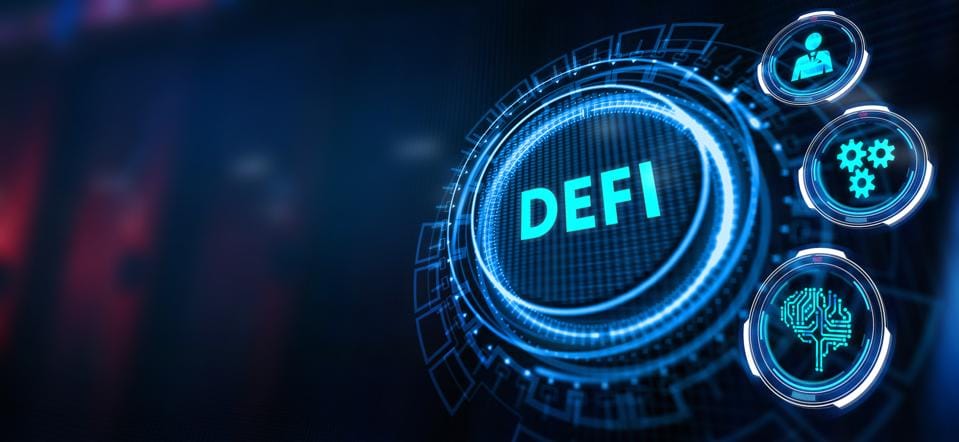In the quiet corners of the internet, where cryptography meets economic theory, a movement began that would challenge the very foundations of global finance. This movement was not born in boardrooms or trading floors. It emerged from online forums, code repositories, and the restless imaginations of developers who believed that money should be free — free from the control of centralized institutions, free from the gatekeepers who dictated who could participate, and free from the limitations of borders. This movement became known as Decentralized Finance, or DeFi.
DeFi is more than a collection of protocols running on blockchains. It is a philosophy — a conviction that the financial system can be rebuilt to serve the many rather than the few. For its proponents, DeFi represents liberation: the ability for anyone, anywhere, to access sophisticated financial services without permission from banks, governments, or intermediaries. But for its critics, DeFi is a dangerous experiment — volatile, unregulated, and teetering between innovation and chaos.
To understand DeFi, one must first recognize that it is not an isolated invention but the culmination of decades of digital and financial evolution. Its roots trace back to the cypherpunk movement of the 1990s, where privacy-focused technologists envisioned a world where cryptography could protect individuals from surveillance and centralized control. Then came Bitcoin in 2009 — the spark that proved decentralized money was possible. And from that spark, the fire spread, giving rise to Ethereum, smart contracts, and the complex, interwoven ecosystem we now call DeFi.
The Architecture of Trust Without Trust
At the heart of DeFi lies a paradox: it offers trust without trusting any single party. In the traditional financial world, trust is enforced through centralized intermediaries — banks, brokers, payment processors, and regulators — each responsible for ensuring transactions are legitimate and obligations are met. In DeFi, trust is replaced by code, mathematics, and the immutable ledger of a blockchain.
The blockchain serves as a public record of all transactions, secured by cryptographic proofs and maintained by a decentralized network of nodes. This infrastructure removes the need for a central authority to validate actions. Instead, rules are encoded into smart contracts — self-executing programs that automatically enforce agreements once predetermined conditions are met.
If you lend money on a DeFi protocol, there is no human banker deciding whether to approve your loan or determining the terms. The smart contract dictates everything: the interest rate, the collateral requirements, the repayment schedule. It does not discriminate, forget, or change its mind. Once deployed, the code is law.
This architecture does not come without challenges. While smart contracts can eliminate human error in decision-making, they are only as good as the code they contain. A flaw in the code is a flaw in the system itself, and unlike in traditional finance, there is often no authority to reverse a mistaken or malicious transaction.
The Tools of a Decentralized Economy
DeFi has grown into a sprawling ecosystem, offering services that parallel and, in some cases, surpass those of traditional finance. On-chain exchanges allow users to swap assets directly from their wallets without intermediaries. Lending protocols enable individuals to earn interest on their holdings or borrow assets by posting collateral. Synthetic asset platforms allow the creation of tokens that mirror the value of real-world assets like stocks, commodities, or currencies.
The beauty of these tools lies in their composability — the ability to combine protocols like building blocks to create new, more complex financial products. A user might borrow stablecoins from one protocol, invest them in a yield-generating pool on another, and hedge the risk using derivatives from a third — all executed seamlessly through interconnected smart contracts.
This composability has been called “money Legos” by enthusiasts, and it is one of the most powerful aspects of DeFi. But like real Lego structures, complexity can make the system fragile. When one piece fails, the entire structure may collapse.
The Promise of Financial Inclusion
One of the most compelling narratives driving DeFi is its potential for financial inclusion. Billions of people around the world lack access to basic financial services. They cannot open bank accounts, secure loans, or invest in markets due to lack of infrastructure, documentation, or political restrictions. DeFi offers a borderless alternative.
All a person needs to participate is an internet connection and a cryptocurrency wallet. With these tools, someone in a rural village can lend their savings to a liquidity pool, earn interest, or secure a loan against their holdings. No credit checks. No discrimination. No bureaucracy.
This promise is not hypothetical. In regions where inflation erodes the value of local currency, people are turning to stablecoins — cryptocurrencies pegged to the value of a stable asset like the U.S. dollar — to preserve their wealth. Farmers have used DeFi lending platforms to fund equipment purchases, and freelancers in developing nations have been paid directly in cryptocurrencies, bypassing slow and expensive remittance systems.
Yet, the dream of universal financial inclusion through DeFi comes with caveats. While access barriers are lowered, new challenges emerge, such as the volatility of cryptocurrencies, the complexity of using DeFi platforms, and the necessity of digital literacy.
The Allure and Danger of Yield
One of the driving forces behind DeFi’s meteoric growth has been yield — the opportunity to earn high returns on capital through mechanisms like liquidity mining, staking, and yield farming. These strategies reward users for providing liquidity or participating in the governance of protocols. In the summer of 2020, dubbed “DeFi Summer,” yields of hundreds or even thousands of percent drew waves of participants eager to multiply their holdings.
Yield in DeFi is not conjured from thin air. It often comes from transaction fees, token inflation, or leveraging borrowed capital. While the potential profits are real, so are the risks. High yields can mask unsustainable economic models, and when market sentiment shifts, the collapse can be swift and severe.
This cycle of exuberance and correction is not unique to DeFi — it echoes throughout the history of speculative markets. But in the world of blockchain, where markets operate 24/7 and transactions settle instantly, the rise and fall happen at dizzying speeds.
The Dark Side of Permissionless Innovation
DeFi’s openness is its greatest strength and its greatest vulnerability. Because anyone can deploy a smart contract, innovation happens at an unprecedented pace. New protocols appear overnight, offering novel financial mechanisms and sometimes dazzling incentives to attract users.
But permissionless creation also means permissionless exploitation. Malicious actors can launch projects designed to drain users’ funds, exploit poorly written contracts, or manipulate market prices. Rug pulls — schemes in which developers withdraw all funds from a liquidity pool and vanish — have stolen billions from unsuspecting participants.
Even without malicious intent, smart contracts are susceptible to bugs and vulnerabilities. Once a flaw is discovered, it can be exploited in seconds, and without centralized control, recovering lost funds is often impossible.
The culture of DeFi prizes experimentation, but experimentation in finance carries real-world consequences. Losses can devastate individuals, especially those who entered the space without fully understanding the risks.
The Challenge of Regulation
DeFi operates in a legal gray zone. Traditional financial regulations are built on the assumption that there are identifiable intermediaries who can be licensed, audited, and held accountable. In DeFi, there may be no company, no headquarters, and no identifiable leaders — just decentralized communities of token holders voting on proposals through governance systems.
This creates a dilemma for regulators. On one hand, they are tasked with protecting consumers and ensuring the stability of financial markets. On the other, heavy-handed regulation could stifle innovation or drive activity underground.
Some jurisdictions are exploring new frameworks that could accommodate decentralized models, while others are seeking to apply existing laws to developers, node operators, or even users. The outcome of this regulatory evolution will shape the future of DeFi for decades.
The Interplay of Risk and Resilience
Risk is woven into the fabric of DeFi. Market risk, smart contract risk, liquidity risk, governance risk — each interacts with the others in complex ways. A sudden drop in asset prices can trigger cascading liquidations across multiple protocols, draining liquidity and destabilizing markets. Governance decisions can alter the incentives that keep a protocol functioning, sometimes with unintended consequences.
Yet, DeFi has shown remarkable resilience in the face of crises. After high-profile hacks or market crashes, communities have come together to rebuild, improve security practices, and create insurance mechanisms to protect against future losses. These self-correcting tendencies are part of what makes DeFi so fascinating — it is not a static system but a living, evolving organism.
Looking Ahead: The Next Frontier
The future of DeFi is uncertain, but its trajectory points toward increasing integration with the broader financial system. Already, traditional institutions are exploring ways to leverage blockchain technology for settlement, custody, and lending. Some envision a hybrid world where DeFi protocols interface seamlessly with regulated entities, combining the efficiency and transparency of blockchain with the safeguards of traditional finance.
Technological advances such as zero-knowledge proofs, cross-chain interoperability, and decentralized identity systems could make DeFi more secure, scalable, and user-friendly. Meanwhile, the cultural shift toward valuing open, permissionless systems may continue to attract talent and capital to the space.
Whether DeFi fulfills its promise of democratizing finance or becomes a cautionary tale of unchecked speculation will depend on how the community navigates its growing pains. One thing is certain: the genie is out of the bottle. The ideas that power DeFi — that code can replace intermediaries, that value can move without borders, that financial systems can be transparent and open to all — are not going back into obscurity.
The Human Element
Behind every protocol, every pool, every yield farm, there are people. Developers who stay up through the night auditing contracts. Traders who ride the emotional waves of market swings. Newcomers who put their savings into a platform they barely understand, hoping for a better future. Skeptics who warn of the risks. Visionaries who dream of financial sovereignty.
DeFi is a technological revolution, but it is also a human story — one of ambition, creativity, greed, generosity, and the eternal struggle between order and chaos. Like all human endeavors, it reflects our strengths and our flaws.
In the end, Decentralized Finance is not simply about replacing banks with algorithms or turning loans into lines of code. It is about reimagining what money can be, how it can move, and who gets to decide. It asks us to confront fundamental questions about trust, freedom, and responsibility.
And whether DeFi ultimately reshapes the global economy or remains a vibrant niche, it has already achieved something remarkable: it has made us question the inevitability of the systems we inherited. It has reminded us that finance — like the internet before it — is not fixed, but something we can redesign if we have the courage, the skill, and the will to try.






